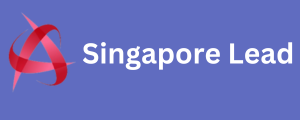A term first created by The New York Times‘s John Markoff, Web 3.0, also known as Web3, describes the next wave of the internet. In the past decade and a half, the use has grown in popularity, even as the world entered a fully Web 2.0 landscape.
A Brief History of the Web
The 1990s heralded the arrival of a new country email list phenomenon: the internet. While, in its purest form, this game-changer of a concept was invented earlier, in the 1980s, it didn’t truly become the bones of what we know it as today until the last decade of the first millennium.
This was Web 1.0, although, at the time, it was simply “the web.” And for its age, it was a wonder. Today, we look back at rudimentary web pages and laugh, but back then, this was a radical means of spreading and consuming information. There was little to no interactivity, with pages almost entirely in “read-only” form. There was also plenty of what we would now call fake news.
What Do We Mean by Web 3.0?
Web 3.0 is a complex idea. At its increased competition & top-spot domination core, it’s about the democratization of the internet — essentially handing the power back to the people, rather than concentrating it in the hands of a few tech giants like Amazon and Google.
“There’s a small group of companies that own all this stuff, and then there’s us who use it, and despite the fact that we contribute to the success of these platforms, we don’t have anything to show for it,” said Mat Dryhurst of New York University. Web 3.0 aims to address that issue.
Web3 will incorporate the semantic web, which involves a computer’s ability to read and attach meaning to multimedia content and draw connections among items. This is a web of linked and shared data, not a string of keywords.
How Will Web 3.0 Affect the Internet and Its Users?
Right now, Web 3.0 is still an trust review emerging entity. But it’s not as far away as some of us might think. Already, we have the building blocks of this new phase of the internet — we just have to put them together.
People will have access to and control over their own information. Their activities will be recorded on a public, decentralized ledger — a blockchain — and they will be able to facilitate connection, streamlining their lives and making everything more efficient.
